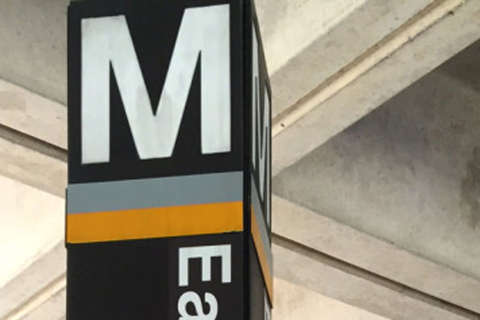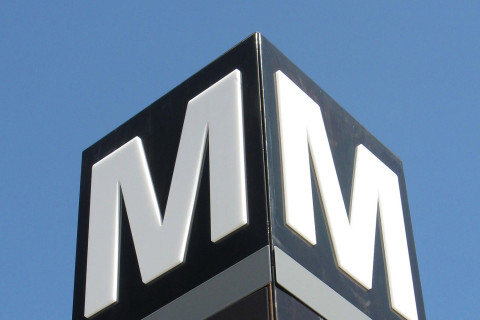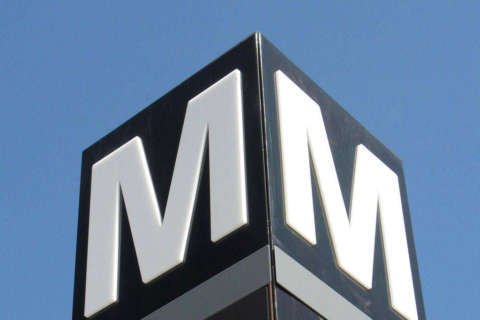A quality control leader on Silver Line construction has provided new information to Metro’s inspector general about the thickness of concrete panels in stations, as the watchdog finalizes a report on one of the key issues that could further hold up the opening of the extension to Dulles International Airport and Ashburn.
Metro officials also shared new details Thursday about a delay in tie-in testing after Metro found the Metropolitan Washington Airports Authority contractors building the line made changes to automatic train control software without obtaining proper safety certifications.
Devin Rouse, Director of the Passenger Rail Division within the Federal Railroad Administration’s (FRA) Office of Railroad Safety, was incredulous.
“I’ve never heard of that, to be honest with you, in safety critical software, especially in train control,” Rouse, a Metro Board alternate, said. “It’s very easy to make a mistake on the software side.”
Getting the certification will take at least two months, particularly given competing demands for the companies involved to help roll out Positive Train Control on freight railroads, so the 13 required full weekend closures of Wiehle-Reston East are likely to take place in the spring.
The shutdowns were supposed to start in the fall and finish by March.
If work had advanced without the certification, there was a risk that signal systems might not work properly when regular service is restored each Monday morning, Metro Chief Operating Officer Joe Leader said.
“When it comes to how much has this delayed the project — I don’t know at this time,” Leader said.
On Thursday, a Metro Board committee put off a planned vote to ramp up hiring and training for the extension, which was based on a potential opening to riders in September.
Board members were skeptical of that date based on the latest twists and turns.
“I think a few of those issues are coming to closure, and I think once we get those in the next month or so, I think that’ll give a much better feel for it,” Metro General Manager Paul Wiedefeld said.
The board wanted more specifics on a likely opening date, which Metro leaders said should become clearer in the next month or two.
Since Metro is not responsible for construction, Wiedefeld told the board that Metro needs to be ready to start service in September or October, in case construction is completed by late spring.
Maryland Metro Board Member Michael Goldman is much less optimistic.
“In the best of circumstances, revenue service may start at the very end of 2020, and in the worst of circumstances … we’re looking at some time in 2021 … at least that’s how I read it,” Goldman said.
Wiedefeld suggested the board could also decide as a policy matter not to accept the line before July, which could provide more ramp up time, delay the need to pay for the new operations and ensure that the line does not open during the summerlong track work between Ballston and Vienna.
Wiedefeld has about $36.5 million available for initial ramp up costs, but will need about $53.6 million more authorized in order to hire and train required workers.
Operating the extension, including the new rail yard and maintenance facility, is expected to cost about $90 million in the first nine months.
Metro projects only a $5 million increase in fare revenue from the new line in the first nine months the extension is open, a number based on systemwide ridership declines over the last five years, incomplete development around the new stations and the likelihood that some of the riders at new stations will shift there from existing stops.
“You have to also account for the fact that ridership across the system has been down by 15% since 2015 with a lower average fare,” Chief Financial Officer Dennis Anosike said.
Ridership on the first part of the Silver Line, which opened in 2014, is only now beginning to jump at some of the stations in the Tysons area, as more of the development and other improvements around the stations come online.
The latest projections from the construction contractors call for substantial completion of the stations and tracks around June 21 and the rail yard around Dec. 9, but the Airports Authority remains confident actual completion is likely to be much sooner than that.
“At this point we are concentrating on completing construction of a reliable, safe and durable project that meets all WMATA quality and safety standards. It’s our job to build it, and it’s WMATA’s job to operate it,” Airports Authority Dulles Corridor Metrorail Project spokeswoman Marcia McAllister said.
The authority has repeatedly rejected the contractors’ proposed schedules.
“We continue to work with both contractors and other agencies to get this project built and open as soon as possible,” McAllister wrote in an email.
In addition to the Office of Inspector General report on concrete framing panel issues in stations, the office is also pursuing a new survey of all 1,700 of the panels so that Metro has a baseline for future inspections and information, as well as guidance on how easy or difficult it will be to regularly inspect the panels.
“That may be something that we have to deal with for years,” Wiedefeld said.
The overall concerns mean the inspector general’s office believes the 1,700 panels need to be treated as if each one is different from the other, so no conclusions could be drawn from a random sample of inspections.
If inspectors see small cracks or rust, that is the time to replace or fix the panels, Deputy Inspector General Rene Febles said.
Metro leaders are generally comfortable with plans either in process or in place to fix other identified construction issues, such as problems with switches that are not level.
“For the most part, we have some acceptable solutions. I am still not there when it comes to the concrete panels,” Leader said.
Rouse, the Federal Railroad Administration safety expert, wanted more reassurances on track leveling issues too.
“Although you may be within your tolerance, your acceptable tolerance — right now — is it going to stay there? And can you live with that in terms of maintenance,” Rouse asked.
Wiedefeld believes the line could open while issues other than the track level issue are still being fixed, as long as the remaining issues do not pose any safety risks but instead are issues that must be resolved to ensure the line lasts the planned 100 years.
“Some of those … can be worked through — it’s money, it’s maintenance, it’s time — but it doesn’t necessarily prevent you from starting the service,” Wiedefeld said.
The Airports Authority and the construction contractor are negotiating over how to pay for problems with construction.
Metro and the Airports Authority will likely reach a similar post-construction agreement on how to handle parts of the project that will be accepted despite not meeting specific aspects of contract requirements.
“We have the ultimate right, OK — to either accept this project or reject it,” Leader said.







